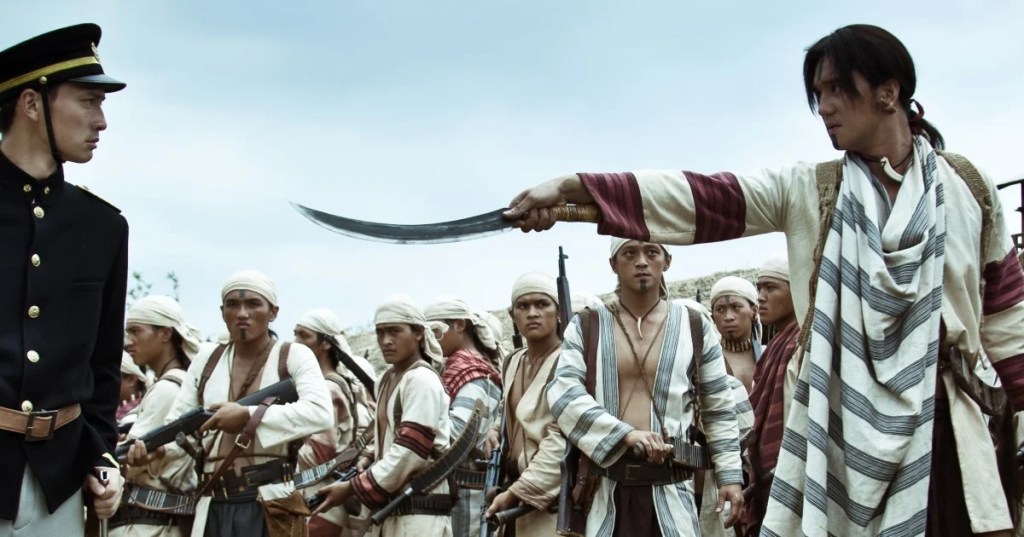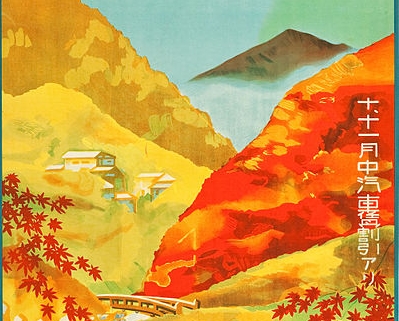
The distance from Puli to Hualien is 40 miles as the crow flies. You can drive it in just three hours, although, tellingly, today’s bus and train routes still take seven, edging all the way around the north of Taiwan, rather than making a beeline across the towering central mountains. But there was a time when it was a track unknown to all but a few aboriginal hunters, until one brave Japanese frontiersman, Katsusaburo Kondo, led a surveying party through the jungle.
That, at least, is what Kondo claimed, in a series of 1930s newspaper articles in which he chronicled his experiences among the tribesmen of the Taiwanese hinterland, a life-long association that led him to acquire the nickname “Kondo the Barbarian”. His memoirs have now been published by Camphor Press, a small publishing house that punches way above its weight in Taiwan Studies, responsible for much of the best and most original material in the field in recent years.
In October 1930 a group of Taiwanese Seediq tribesmen infiltrated the sports day at a Japanese-run high school and massacred over 130 Japanese, as well as two Chinese observers who had fatefully decided to cosplay in kimono. The “Musha Incident” became a touchstone of Japanese-aboriginal relations, and would lead to a brief colonial war that claimed hundreds of Seediq lives. The Musha Incident was a shock to the Japanese system, but has also been framed as a form of indigenous apocalypse, as the last generation of Seediq warriors, deprived of their traditional manhood rituals, went hunting for their colonial oppressors in a last, desperate attempt to merit the killers’ tattoos that would entitle them to join their ancestors in the afterlife.
Suppressed for decades under the Kuomintang government, the story of Musha sprang back into life in the 1990s, as the Taiwanese media gained increasing interest in indigenous issues. It was adapted into a comic by a native artist, which itself became a major source for the film Seediq Bale: Warriors of the Rainbow (2011, pictured), an epic action movie that reframed the story along the lines of Braveheart or the Native American “ghost dance” cult.
The Musha Incident, in fact, remains such a huge presence in reports of Taiwan under the Japanese that it still accounts for 10% of all the material published in Japanese relating to the fifty years of colonial rule. Paul Barclay’s new book digs down into one of the ur-texts that inform so many of these stories, the reminiscences of an unreliable narrator who tried to place himself at the centre of the story.
Katsusaburo Kondo is that most dangerous of conmen: an evocative and persuasive writer. He begins his story with the aftermath of the Musha school massacre, when he visits his estranged aboriginal stepdaughter, who confides to him the true reason for the war, before hanging herself in her prison cell. He then leaps back in time to tell the story of his relationship with Taiwan’s indigenous people, as an interpreter, explorer and trader.
In particular, Kondo is keen to insert himself into the narrative of the Fukahori Expedition, an ill-fated platoon murdered by head-hunters in the Taiwanese hinterland. He frames much of his subsequent adventures as a quest to avenge the lost soldiers, and to retrieve their bodies and possessions, finally striking it lucky when he stumbles across their skulls on display in a tribal longhouse. But as Barclay notes in his meticulous annotations, Kondo’s life-long claim that he, too, would have perished on the expedition were it not for a fortunate bout of malaria, was part of his ongoing attempt to appear far more involved than he really was.

“Despite… many inconsistencies, falsehoods and implausible claims,” observes Barclay, “Kondo’s writings wedged their way into discourse, by hook or by crook.” However, they are also loaded with tantalising and convincing glimpses of aboriginal culture, including a chilling account of the “guardian of heads” (the crone priestess who welcomes a new skull to the tribal shrine), and a charming anecdote in which an indigenous girl confides to Kondo that her people are “afraid of the Japanese people who tick-tock.”
It takes Kondo a while to realise that she is frightened of his pocket watch, which makes him, too, seem like an otherworldly creature bearing haunted devices. This is catnip to the historian in search of local colour, but Barclay is on hand to warn that it seems suspiciously close to another story told by one of Kondo’s associates, and was quite possibly something that he ripped off. In another part of the tale, he recounts a horrifying attack by several tribal youths, who decide to lynch him for his skull. He fights them off, but is so grievously wounded that he writes his will… except he is “fully healed” within two weeks. Well, which is it?
And yet, and yet, there are moments in Kondo’s story, translated here in full, that are truly illustrative of the stand-off between the aborigines and the Japanese, such as the sight of tribesmen going cap-in-hand to the local police station to plead for meagre parcels of gunpowder and a couple of bullets, merely so they can continue their livelihoods. Kondo tells tales of the Seediq hardening the soles of their feet by walking on hot iron rods, and of the strict lumber merchants whose insistence on unmarred timber is the cause of much misery among tribal log-carriers. Finding a corpse on their mountain mission, he asks his tribal companions if they want to eat it, and they look at him in horror – cannibalism being taboo among them, despite claims to the contrary made by the foreign media. These observations are so mundane, so everyday that they have to be true. Right?

With Barclay as our guide, Kondo’s tall tales become an object lesson in text-critical analysis, as we get to grips with the lies he tells others, the lies he tells himself, and some of the truths that are still revealed. His account of his divorce from his common-law wife, in which he delivers a pig’s head and a keg of rice wine to her father, seems faithful to tribal traditions, although one wonders just how happy the former Mrs Kondo was with it – Kondo claims she waves him away with a laugh. Barclay even gently makes Kondo more relevant to modern historians, by redacting some of his hand-waving racist dismissals of everyone as “savages”, replacing his blanket descriptions with more exacting classification of tribes and sub-groups.
Sometimes, one thinks, the tribesmen have the last laugh. Kondo writes sneeringly of a moment on his expedition when he convinces his tribal companions that he has a magical amulet that will turn a single grain of rice into a full belly for each of them. “So simple-minded,” he scoffs when they appear to fall for it. And yet he also tuts in annoyance when they attempt to delay the mission by waiting for a new-born baby to grow up so that its mother is free to accompany them. Kondo decries this as a moment of savage sloth, but one wonders if the tribesmen weren’t concocting an excuse to delay the city boy’s dangerous mission for another season.
Resistance to the Japanese authorities was futile. Barclay has some winning data on the nature of colonial wars, pointing out that the Musha Incident was such an embarrassment to Tokyo that the soldiers who avenged it were handed the most desultory of medals and rewards. Even as the Hague Convention attempted to limit the savagery of modern warfare, colonial campaigns were somehow exempt, subjecting the Seediq to some of the very worst of modern weaponry, including aerial bombardment of their forest hideouts.
Kondo writes vividly of some of the attempts to get the aborigines to understand how pointless it was for them to fight back, with a tribal delegation brought to visit Japan itself to show them the power and might of the Land of the Rising Sun. Put aboard a train for the journey to Keelung, the Seediq scream in fear, protesting at the dizzying speed, pointing in terror at what appears to them to be “dancing trees” beside the tracks. It is a beautiful image, but Barclay points out that while Kondo’s early writings describe the aborigines as brave, hardy trackers and hunters, his later work transforms them into clueless, whiny man-children, reflecting Japan’s own drift towards imperial condescension. In Barclay’s hands, Kondo the Barbarian transforms from an account of the Taiwanese indigenous people to an even more revealing narrative about the Japanese who were writing about them.
Kondo the Barbarian: A Japanese Adventurer and Indigenous Taiwan’s Bloodiest Uprising is published by Camphor Press. Jonathan Clements is the author of A Brief History of China.

